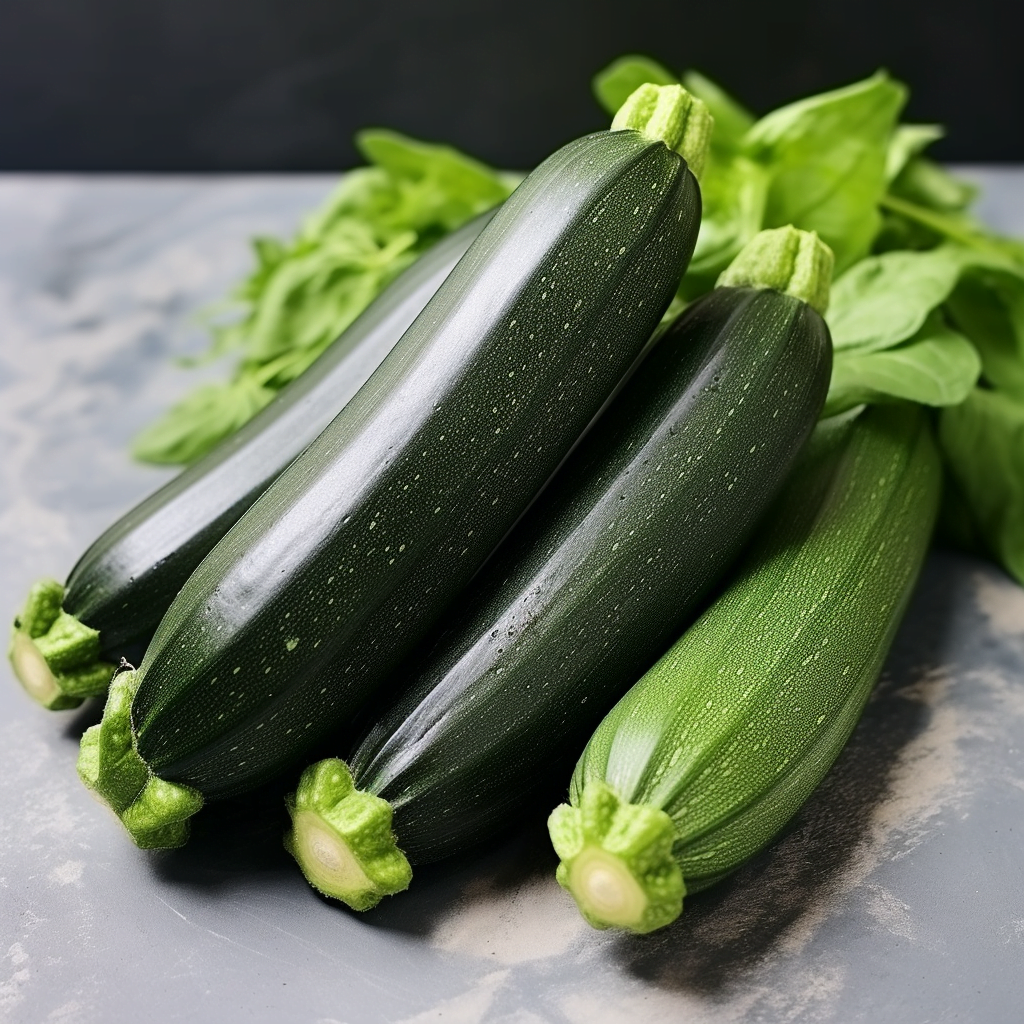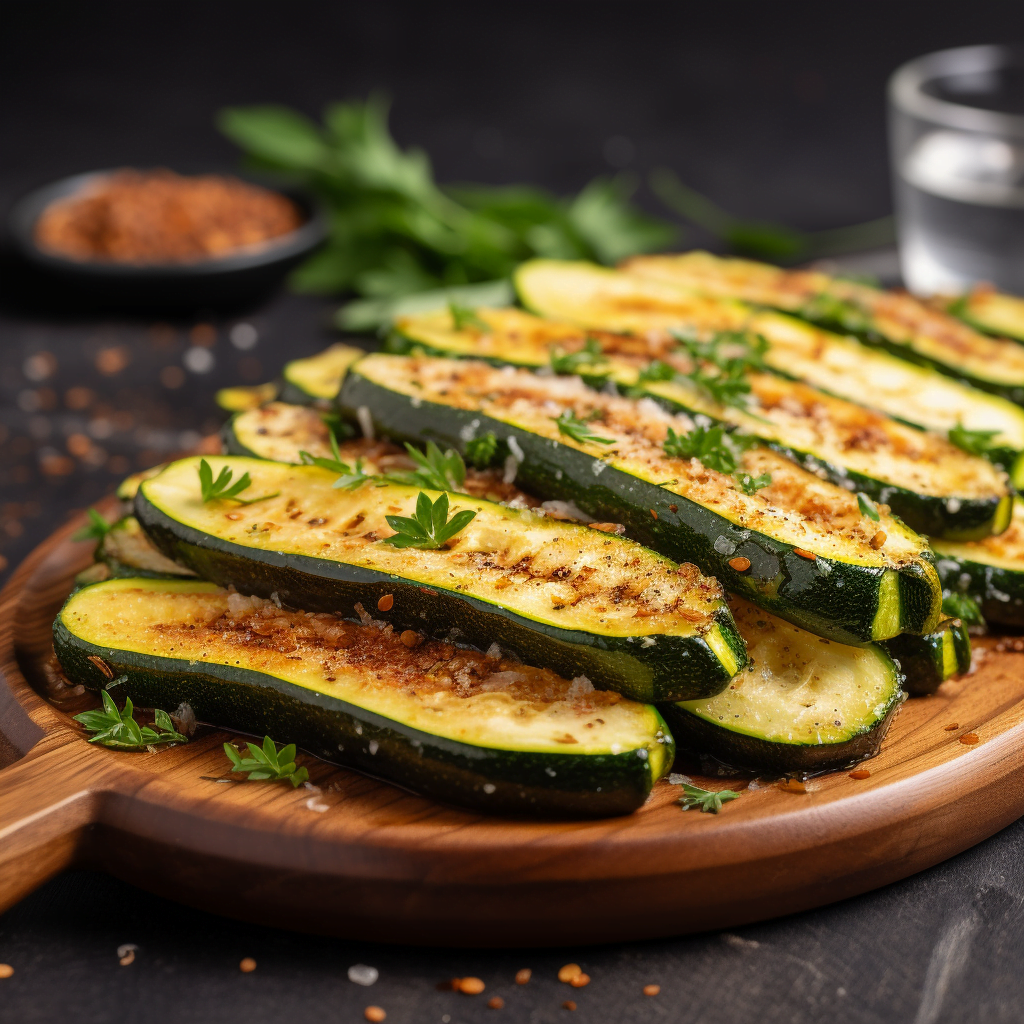Introduction
Zucchini is a healthy, versatile summer squash enjoyed by many. However, improper cooking techniques can lead to unpleasantly soft, mushy zucchini. For the best flavor and texture, zucchini should be tender on the outside yet retain a slight firmness in the center when cooked.
This guide covers everything you need to know to cook zucchini to crispy, juicy perfection every time. You’ll learn the ideal texture for cooked zucchini, factors that cause it to overcook, methods to keep it firm during cooking, ways to test for doneness, and how to use it after cooking to preserve texture. With these tips, you can master the art of cooking zucchini until just fork-tender. So Should Zucchini Be Soft in the Middle?
What is the Proper Texture of Cooked Zucchini?
Perfectly cooked zucchini has a bright green interior with a tender yet slightly al dente bite. The outer flesh and seeds should be fork-tender enough to pierce easily with no resistance. However, the very center should retain a pleasant firmness without being crunchy or raw.
Characteristics of ideal cooked zucchini texture:
- The skin and outermost flesh are completely fork-tender
- The seeds are thoroughly cooked but not mushy
- The core center provides a subtle pleasant resistance when pierced
- The interior color remains vivid green without dulling
- It retains a juicy texture, not dried out or waterlogged
Achieving this balance of tenderness on the outside and bite in the middle can be tricky. But following a few simple guidelines will help you cook zucchini to the perfect point of doneness each time.
Why Proper Texture Matters
Besides taste, texture is one of the most important elements of an enjoyable eating experience. The gratifying, juicy crunch of properly cooked zucchini enhances its flavor. A mushy, soggy texture ruins the experience of an otherwise healthy veggie.
Taking care to optimize texture ensures you’ll want to keep enjoying zucchini as part of a healthy diet. Knowing how to cook zucchini properly also allows you to use it in more dishes like pastas, sandwiches, salads and more.
Factors That Contribute to Overly Soft Zucchini
Before learning how to prevent mushy zucchini, it helps to understand what causes it in the first place. Here are some of the top culprits of overly soft, watery zucchini:
Size
Larger zucchinis are more prone to overcooking, especially in the seedy inner core. Aim for zucchinis no more than 6-8 inches long for the best results. The flesh stays firmer when harvested smaller.
Freshness
Older zucchini that has been stored too long will start to lose moisture and structural integrity. For optimal texture, only cook zucchini within 2-3 days of purchase. The older and more damaged the skin, the faster it will deteriorate.
Inner Seeds
The inner seed section of zucchini is naturally spongier and more apt to waterlog during cooking. Trim this section out prior to cooking if desired.
Cooking Method
Boiling, steaming, and microwaving are prime culprits of waterlogged zucchini. The moist heat penetrates quickly, causing inner fibers to break down too fast.
Cook Time
The longer zucchini cooks, the more moisture evaporates and cell walls break down, leading to mushiness. Opt for higher heat and shorter cook times.
Insufficient Draining
Letting zucchini sit in liquid after cooking causes it to reabsorb moisture and lose any remaining firmness. Always drain immediately and blot dry.
Tips to Keep Zucchini Firm When Cooking
Now that you know what leads to mushy zucchinis, here are tips to keep your zucchini crispy, juicy and firm during cooking:
Select Smaller, Fresher Zucchinis
Choose zucchinis less than 8 inches with taut, unblemished skin. Avoid larger, heavier, more mature zucchinis. Seek out locally grown zucchini in season for peak freshness and texture.
Trim Ends
Cut off the stem and blossom ends before cooking as these sections tend to be mushier with more seeds.
Slice Evenly
Cut zucchini into uniform slices, spears or cubes to promote even cooking. Optimal thickness is 1/2 inch.
Remove Seeds
For the firmest results, you can scoop out the inner seed section with a spoon prior to cooking.
Preheat cooking vessel
Get pans or grill hot before adding zucchini so it can sear and cook quickly.
Use Dry Heat Cooking Methods
Pan frying, sautéing, broiling, grilling and roasting are ideal for driving off external moisture to keep zucchini firm.
Employ High Heat
Higher heat cooks the outer layers faster so inside has less time to break down.
Don’t Crowd Pan
Avoid overfilling cooking vessel, which causes moisture to steam and reabsorb into zucchini.
Stir Infrequently
Flipping or stirring too often leads to excess moisture loss. Let sear undisturbed before gently turning.
Cook Just Until Done
Test doneness early and often. Remove from heat immediately when center reaches desired firmness.
Drain and Dry Immediately
After cooking, transfer zucchini to paper towels or a cooling rack to prevent sogginess.
How to Tell When Zucchini Reaches Ideal Texture
Determining exact doneness requires checking zucchini frequently as it cooks:
- Outer skin should be lightly browned
- Flesh should pierce easily with a fork
- Very center should offer slight resistance when poked
- Interior should remain bright green
- Seeds should be just tender, not mushy
Err on the side of underdone when uncertain. Zucchini overcooks quickly, so it’s best to remove from heat at first signs of correct texture and allow residual heat to finish cooking.
Common Mistakes to Avoid
Just as proper technique is critical for perfect zucchini, a few common mistakes can ruin its texture:
- Cooking too large or old of zucchinis
- Boiling instead of dry cooking methods
- Crowding the pan
- Cooking too long after outer layer is browned
- Not draining immediately after cooking
- Letting zucchini sit in liquid before serving
With care and attention, you can easily avoid these pitfalls and cook zucchini to juicy, tender perfection.

Putting Your Perfectly Cooked Zucchini to Use
Now that you’ve mastered the ideal texture for zucchini, it’s time to enjoy it in recipes! Properly cooked zucchini with the right amount of bite retains the best flavor and moisture content to use in a variety of dishes:
- Toss in salads or pasta dishes right after cooking
- Layer on sandwiches or burgers for a satisfying crunch
- Mix into dips like hummus, baba ghanoush or tzatziki
- Bake into quick breads, cakes or muffins
- Top pizzas just before serving
When cooking zucchini to use later, undercook it slightly, then quickly chill in an airtight container. The residual heat will finish cooking it while locking in moisture.
Key Takeaways for Cooking Zucchini with the Perfect Texture
Follow these tips for fresh-tasting zucchini with the ideal tender-yet-firm texture:
- Choose small, fresh zucchinis less than 8 inches long
- Trim ends and cut into uniform 1/2 inch pieces
- Remove spongy inner seeds if desired
- Use dry cooking methods like sautéing, grilling or roasting
- Employ high heat to sear exterior and cook quickly
- Cook only until fork-tender with slight resistance in center
- Drain immediately and let excess moisture evaporate
- Test doneness early and often during cooking
- Use right after cooking for best flavor and texture
With practice, you’ll be able to execute perfect al dente zucchini every time. Improperly cooked zucchini will become a distant memory.
The next time you cook up this healthy summer squash, remember—the center should retain a pleasant bite, not be soft all the way through. Master these tips for irresistibly firm, juicy zucchini fit for any dish.



